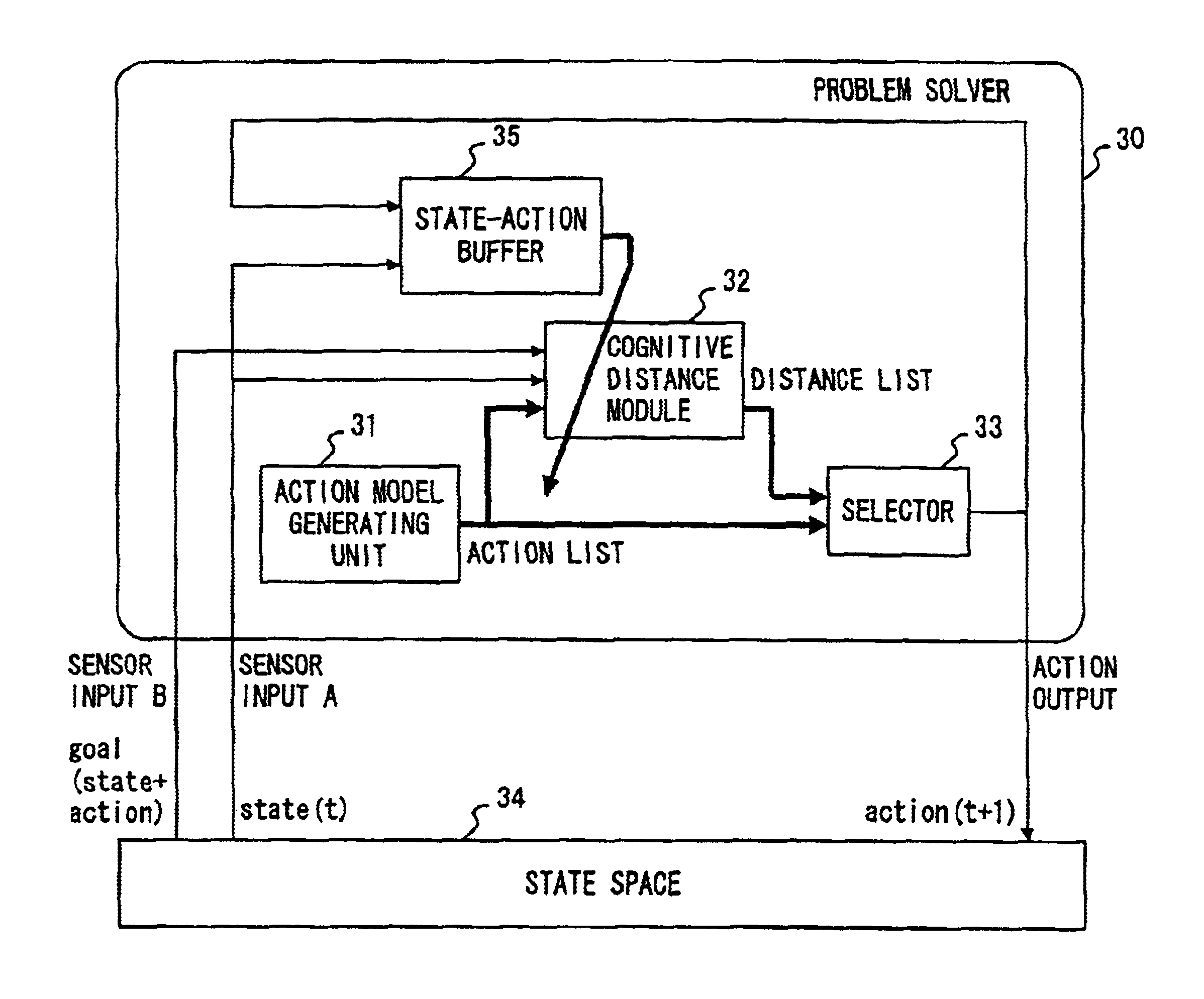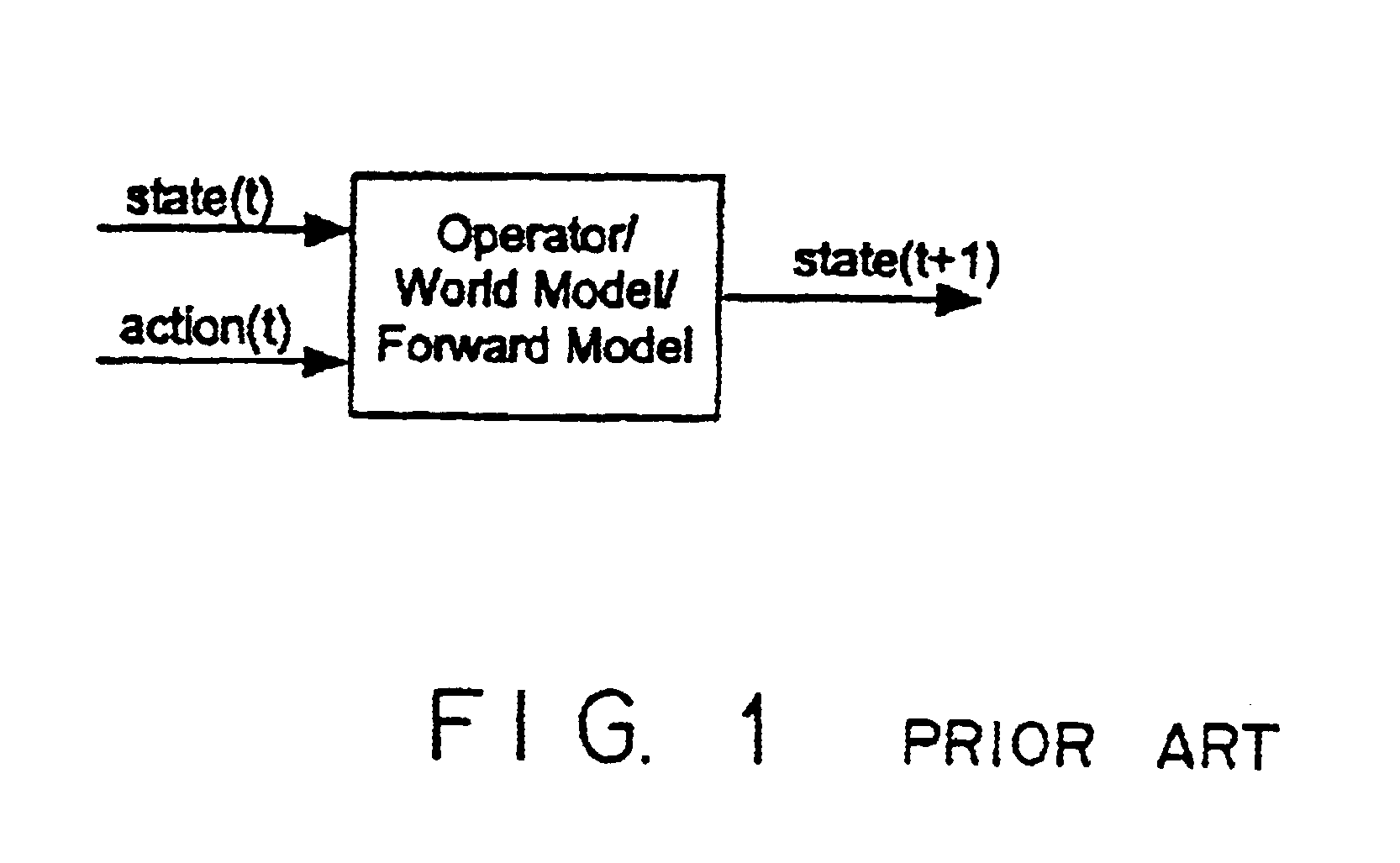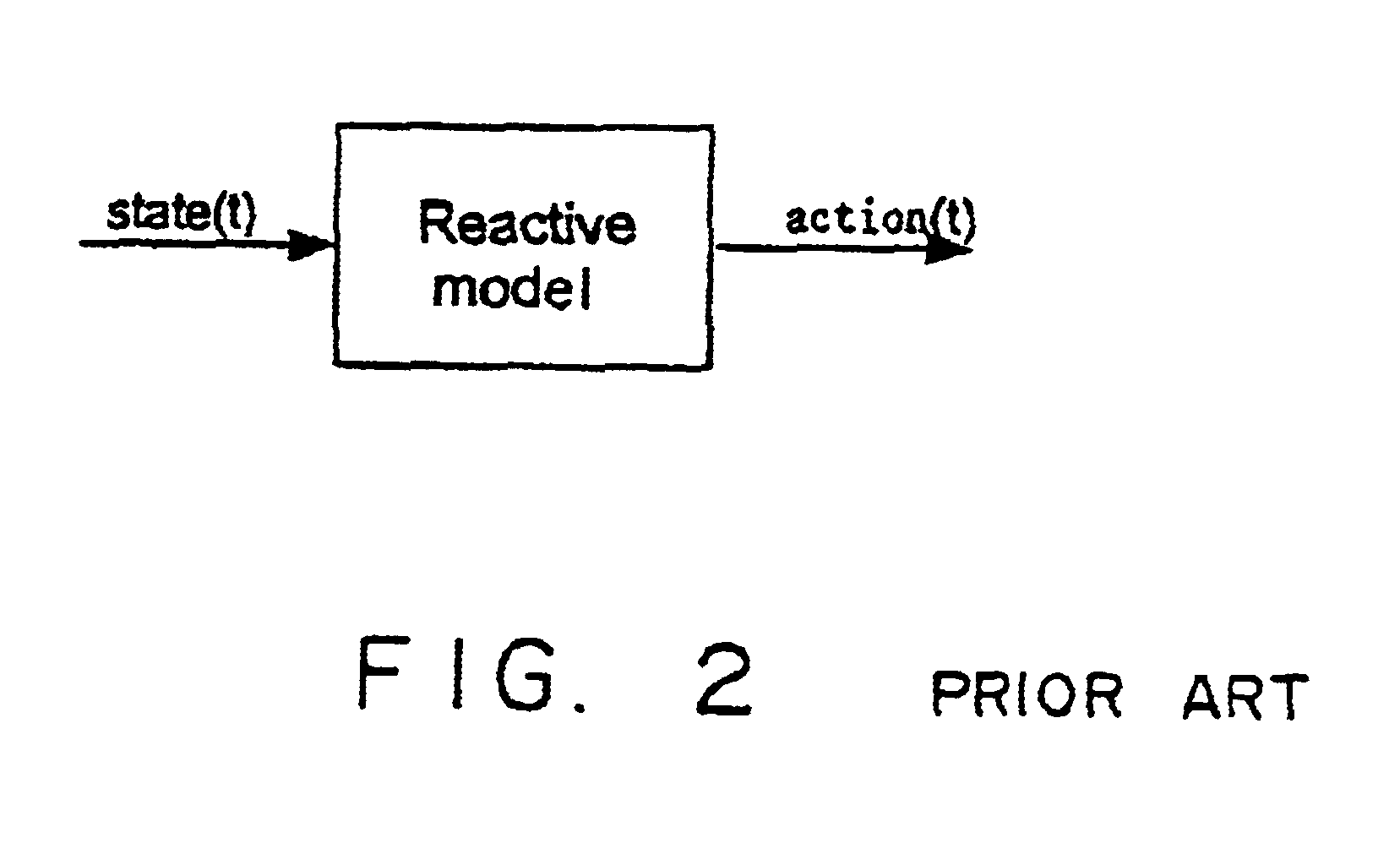Problem solver uses learning a cognitive distance to attain a goal state
a problem solver and cognitive distance technology, applied in adaptive control, program control, navigation instruments, etc., can solve the problems of low calculation cost for executing an action, large number of calculations, and high calculation cos
- Summary
- Abstract
- Description
- Claims
- Application Information
AI Technical Summary
Benefits of technology
Problems solved by technology
Method used
Image
Examples
first embodiment
In the following description, the problem solver 30 shown in FIG. 6B is referred to as problem solver according to the
In the problem solver according to the first embodiment, a state in a state space defined by a problem and an action executed therein are distinguished. However, in the following description, a state and an action executed therein are not distinguished, but treated as one state. As shown in FIG. 13, a general state Sa(t) of which a state s(t) at time t and an action a(t) at time t (the action a(t) is executed for obtaining the state s(t)) is defined. A problem solver based on a general cognitive distance corresponding to the general state is described as a second embodiment.
second embodiment
FIG. 14 shows the structure of the problem solver based on a general cognitive distance. In the structure of the problem solver as shown in FIG. 15, a vector of a current state s(t) and an action a(t) that is executed for obtaining the state s(t) is handled.
A problem solver 40 shown in FIG. 14 comprises a movable state model generating unit 41, a general cognitive distance module 42, a selector 43, and a state buffer 45. The problem solver 40 repeats a trial for inputting a current general state Sa(t) [=s(t)+a(t)] and a general goal state G(t). As the problem solver 40 sufficiently repeats the trial, it can quickly output a sub goal SG(t)=Sa(t+1) [=s(t+1)+a(t+1)] as a general state containing an element that represents an adequate action that can be executed as the next action corresponding to a current general state Sa(t) and a goal state G(t) that should be obtained.
The state buffer 45 stores the past records of general states Sa(t) that have been input to the problem solver 40. ...
third embodiment
Next, the present invention will be described.
Since the problem solvers according to the first and second embodiments of the present invention are based on the cognitive distance (or general cognitive distance), a storage capacity for a large amount of information is required. Thus, there are two problems that follow.
(1) Large Number of Combinations of Cognitive Distances
When the number of general states in a state space defined by a problem is denoted by Ns, the number of combinations of cognitive distances become O(Ns.times.Ns). In other words, the number of combinations is proportional to the square of the number of states. Thus, when a large state space is defined by a problem, it is not practical to store information of all cognitive distances.
When the average of the number of directly movable states is denoted by m, the storage capacity of the total of actions of the conventional GPS is at most O(Nx.times.m). In addition, the storage capacity of the total of actions of the rei...
PUM
 Login to View More
Login to View More Abstract
Description
Claims
Application Information
 Login to View More
Login to View More - R&D
- Intellectual Property
- Life Sciences
- Materials
- Tech Scout
- Unparalleled Data Quality
- Higher Quality Content
- 60% Fewer Hallucinations
Browse by: Latest US Patents, China's latest patents, Technical Efficacy Thesaurus, Application Domain, Technology Topic, Popular Technical Reports.
© 2025 PatSnap. All rights reserved.Legal|Privacy policy|Modern Slavery Act Transparency Statement|Sitemap|About US| Contact US: help@patsnap.com



